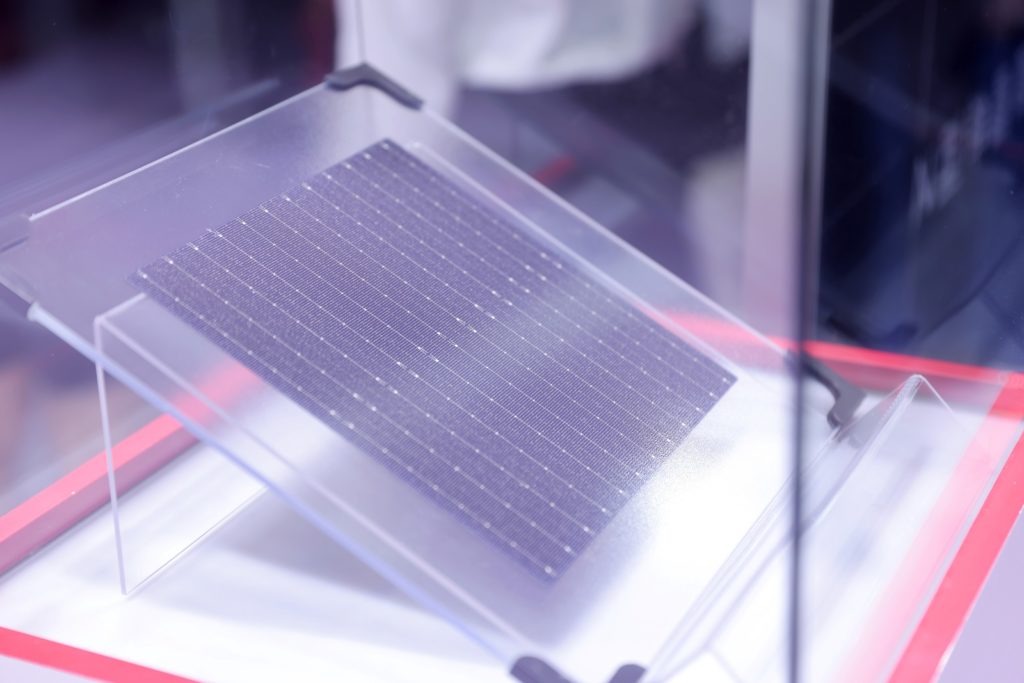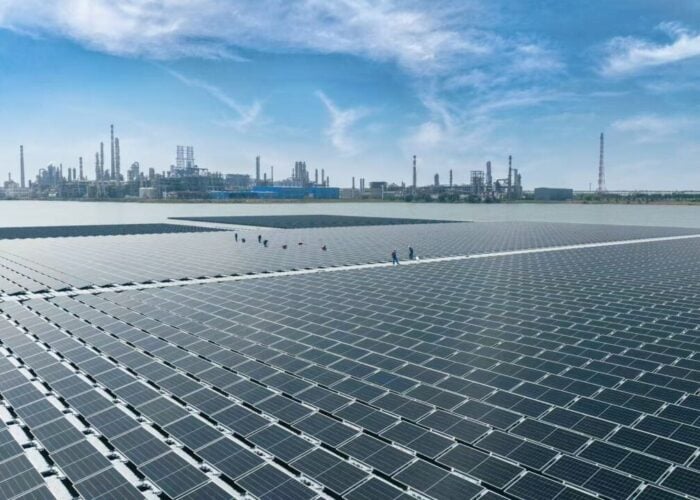
The PV industry today has become a China-driven manufacturing sector, with the rest of the world often left to deal with the good and bad associated with one specific country being so dominant from a production standpoint.
Indeed, in looking at upstream investments, the difference only seems to grow each year, somewhat regardless of what is happening with technology trends, pricing levels, profit margins and end-market deployment.
Unlock unlimited access for 12 whole months of distinctive global analysis
Photovoltaics International is now included.
- Regular insight and analysis of the industry’s biggest developments
- In-depth interviews with the industry’s leading figures
- Unlimited digital access to the PV Tech Power journal catalogue
- Unlimited digital access to the Photovoltaics International journal catalogue
- Access to more than 1,000 technical papers
- Discounts on Solar Media’s portfolio of events, in-person and virtual
But everything goes in cycles, and this could well extend to the period within the solar industry that has seen annual deployment levels move from 10GW per annum to levels north of 150GW today.
Are we in fact on the verge of a major manufacturing balancing act that will occur as the industry drives towards the terrawatt annual deployment level by 2030?
As PV Tech prepares for the next staging of our flagship event – PV CellTech – held online again during 25-26 August 2021, the need to understand current state-of-the-art, mainstream PV cell manufacturing has not been so critical in the past decade.
How will the p-type to n-type transition occur? Are the current crop of Chinese cell producers really going to be ones that drive this technology shift? How can western investments into new cell/module fabs justify returns, and how should they strategise to be in a position to lead PV cell technology when the timing is right?
This article previews the session topics for PV CellTech 2021 Online and discusses some of the key questions on PV technology currently being scrutinised by the industry in general, and especially for new cell/module investments on the global stage.
Origin of manufacturing moves from minimum-cost to maximum-sustainability
The growth of the solar industry over the past decade has been corporate, institutional investment-led, where the last decimal place on return on investment models has trumped everything else related to the manufacturing of the key components needed to build a solar farm.
The days of ‘power to the people’ that permeated the industry at the country-level seem a distant memory now; when government incentives targeted homeowner investments (capex). While much of PV deployment then was still based on financial gain, there was a much stronger personal attachment to the installers (domestic, local firms) and which company was supplying the modules.
However, all investment is subject to scrutiny, not just from a financial standpoint, but a moral one. And today, origin of manufacture and sustainability footprints firmly fall into the moral category. While it is easy to join the dots today on the Xinjiang question, this is just one example. It is part of the much bigger picture related to solar being beneficial to local economies, and not at the behest of any one country (such as China is today). In fact, the same logic could be applied to shipping costs, or indeed exchange rate fluctuations. There is an endless list actually of issues that all come back to the industry being overly reliant on one country making such a high volume of product used.
This does not imply by any means that China’s role in PV manufacturing should be seen as negative moving forward. It just puts it into a different context, and one that is challenged and moulded by what is happening globally through the entire manufacturing value-chain. Indeed, it may well be that the quickest route to levelling off the one-country disparity in manufacturing is for Chinese companies to embrace overseas production sites from a long-term strategic standpoint.
An interim route of course exists, where Chinese companies work with – not against – regional manufacturers.
None of the above is necessarily a showstopper, and may indeed become a prerequisite of truly playing in a global TW annual industry. But what is more interesting to ponder now is how technology fits into this, and whether this type of environment can move the industry in a different direction and speed, compared to leaving China to figure out how to make TW levels of advanced n-type or tandem-based solar cells by 2030.
Finally, the icing on the cake would be for global corporates (the ones that have driven the industry to utility-scale) to get fully on board with PV technology, and not just rushing around today to dampen any negative publicity that could arise from being exposed to the China-centric production machine that is responsible for 90%-plus of components used on owned assets.
This would be a gamechanger, not seen before in the sector, and would reinvigorate manufacturing on a global level.
PV CellTech 2021 Online – a forum to understand manufacturing location and technology drivers today
When we started PV CellTech back in 2016, the industry had strong participation from cell producers in Taiwan, Korea and Japan. This diversity actually created a more stimulating discussion on which technologies would emerge in the coming years; multi vs mono was by far the most common topic at PV CellTech events until 2018, for example, in addition to PERC market share levels.
As everyone knows right now, p-mono PERC is completely dominant within the sector, with virtually every Chinese PV player (existing and new entities) churning out press announcements on a weekly basis on aspirations about becoming an n-type cell maker at the 10-GW-level by tomorrow. While one can applaud the sentiment, it really should be the global sector (upstream and downstream) that collectively drives such an important technology change today.
Cell manufacturing and location-of-fabs therefore sets the scene for the topics to be covered in PV CellTech 2021 Online during 25-26 August 2021, but another major factor here relates to a crucial part of the industry today: production equipment and materials supply. Any shift to global manufacturing would have to be in parallel with a new list of production equipment suppliers compared to the past few years, and would also necessitate some of the leading Chinese equipment suppliers becoming more globally-focused and not simply selling domestically to fellow Chinese PV entities.
PV CellTech 2021 Online occurs over two days (25 and 26 August 2021), with three key sessions each day. Each session will be formed of 3-4 keynote presentations, all of which I will moderate myself. One can imagine PV CellTech Online as a two-day high-quality webinar feast, with the ability for attendees to listen to recordings outside their local time zones.
The following sections of the article will discuss each of the six sessions of PV CellTech 2021 Online.
Day one sessions
The first session on day one starts with a treat for the industry as a whole. Titled Mass production status and efficiency limits for leading p-type & n-type cell architectures, the talks here will be delivered by Martin Green of UNSW and Wei Shan, the CTO at JA Solar. Additional talks include an up-to-date technology review by myself, looking at where the real n-type production is taking place this year. The opening session will therefore identify the key themes for the two days of PV CellTech Online 2021, and how the industry is really moving to make the n-type transition, in addition to the benefits on offer by way of efficiency and cost once p-type has been fully phased out.
The second session – Production equipment & materials to enable high-throughput & low-cost n-type cell manufacturing at the multi-GW scale – focuses on perhaps the most critical part of the n-type transition, and key manufacturers of equipment and materials. Talks will come from Heraeus, SCHMID Group and Von Ardenne. Getting the new n-type fabs operating reliably at the multi-GW scale is currently one of the major challenges to the sector, and the contribution here from equipment and material suppliers over the next few years is essential to n-type success.
The final session on day one – Cell manufacturing in Europe, the U.S. & Korea; GW mass production from a diversified supply-base – addresses one of the major themes discussed at the start of this feature article; making cell production a global industry, not just focused on China and Southeast Asia. This issue is currently seeing huge focus, with investment decisions pending in coming months and years.
Day two sessions
The second day of PV CellTech 2021 Online starts with Technology-transfer opportunities to accelerate n-type ramp-up investments globally. It is clear today that decision making on n-type variants, and how to make these work reliably at low cost, is taking place across all parts of the industry. Many of the proponents will only succeed however, if they are aligned with expertise that exists mainly in the leading technology-transfer research institutes globally. This was a key part of the industry making p-type and p-mono PERC mainstream a few years ago. It will almost certainly have to be repeated again, focused on n-type and training production engineers to maximize the new technology potential.
The next session on day two is titled: Polysilicon & wafer supply: geographic production status & meeting high-efficiency cell purity/quality requirements. This issue has been known to be critical for years, as the supply of n-type ingots/wafers has been a niche segment until now. The time to fully understand that is needed from polysilicon purity and ingot pulling for n-type cell production is now, before the demand for wafers comes online in scale. Knowing if all n-type polysilicon and wafers will be made in China (like p-mono today) is a massive deal, and now has a political element underpinning it.
The final session of PV CellTech 2021 Online has been a regular feature at every PV CellTech event going back to 2016: The PV technology roadmap for 200-GW-plus cell production in 2022. This session will again feature the latest ITRPV results and forecasts, delivered by Markus Fischer, in addition to other perspectives on PV technology trends out to 2030. Knowing the factors that will impact adoption rates of n-type (and the possibility of hybrid or tandem variants) out to 2030 is key to understand now.
Getting involved in PV CellTech 2021 Online
Details on attending the online event during 25-26 August 2021 can be found at the event website here. There are still a few speaking slots available, so don’t hesitate to ask us. The final agenda will be published on the site at the start of August.
Finally, don’t forget that the accompanying PV Tech quarterly report, details of which can be seen here. Our team will be happy to set up a demo to see the capacity, capex, technology roadmap, production and R&D spending of the companies making up more than 95% of all industry manufacturing and shipments in 2021, in addition to lots of other information essential to forming strategies going forward.







